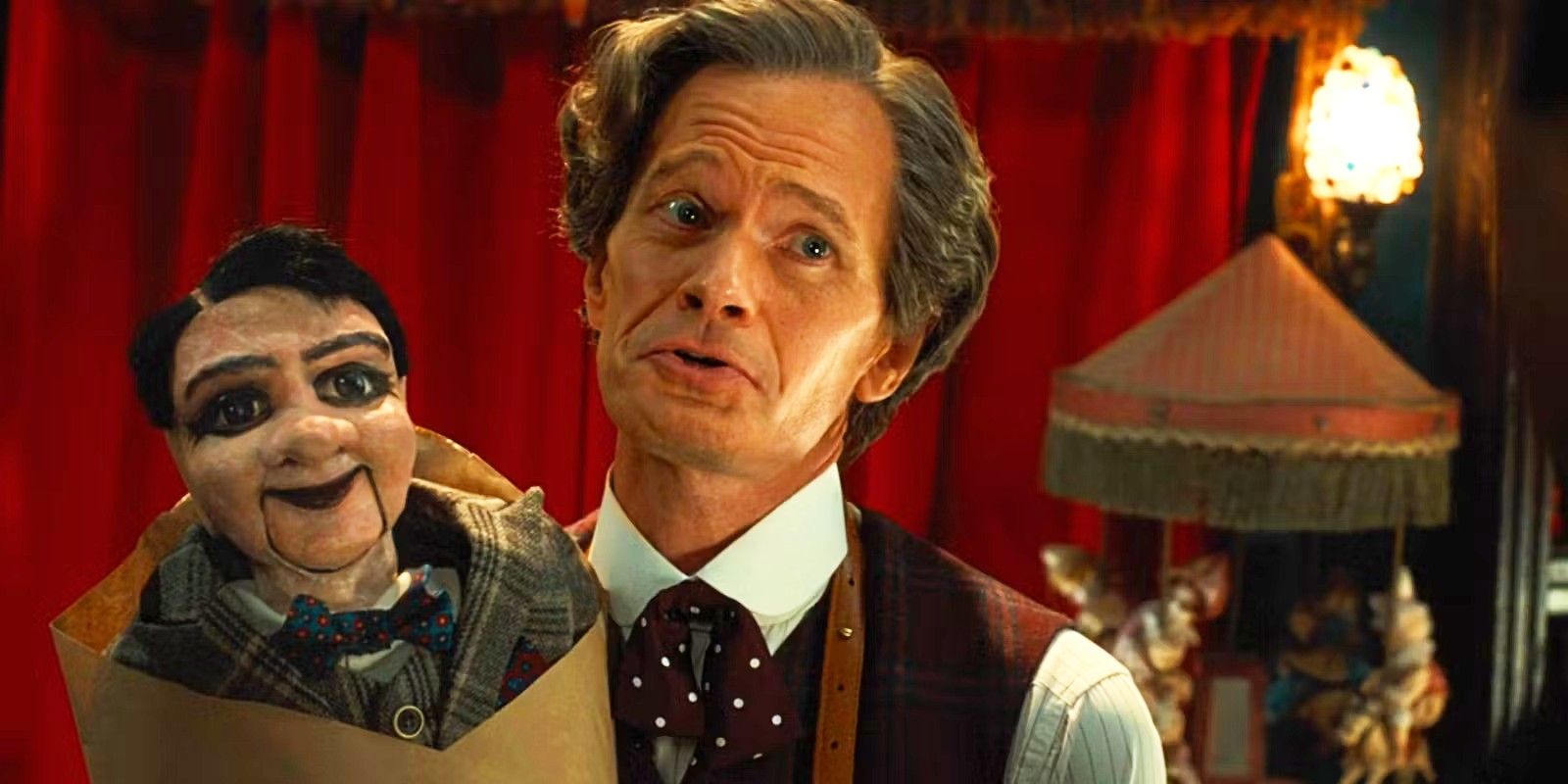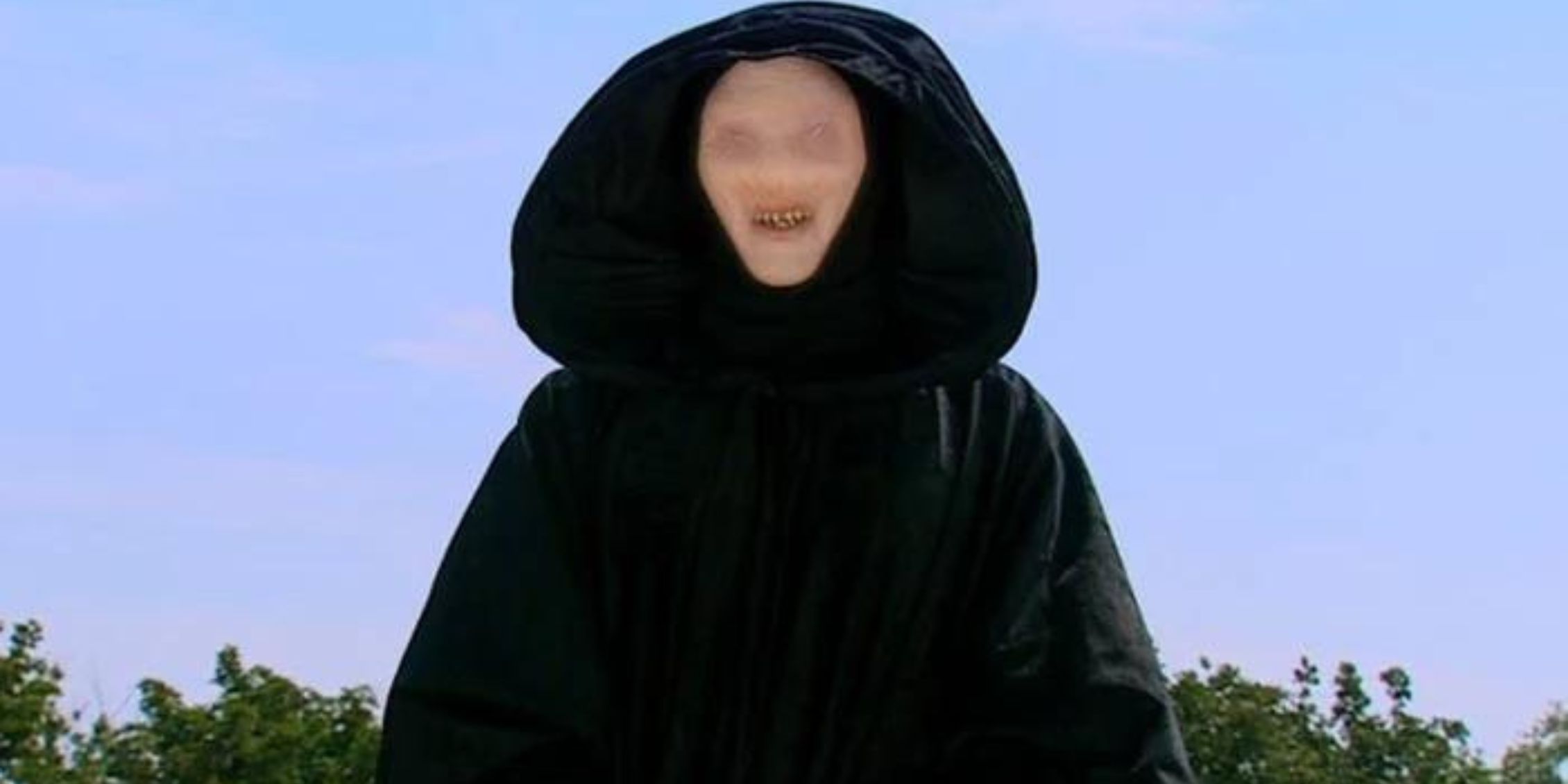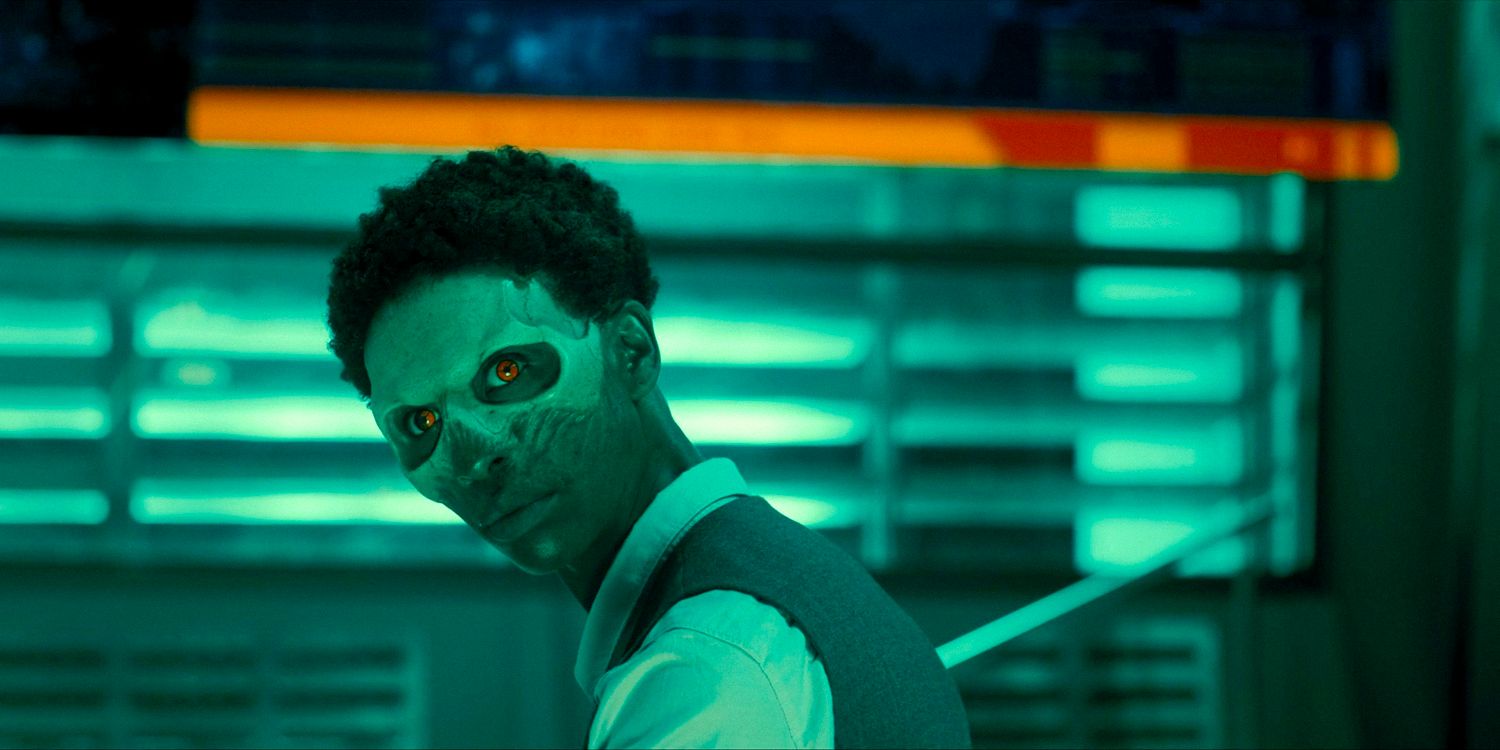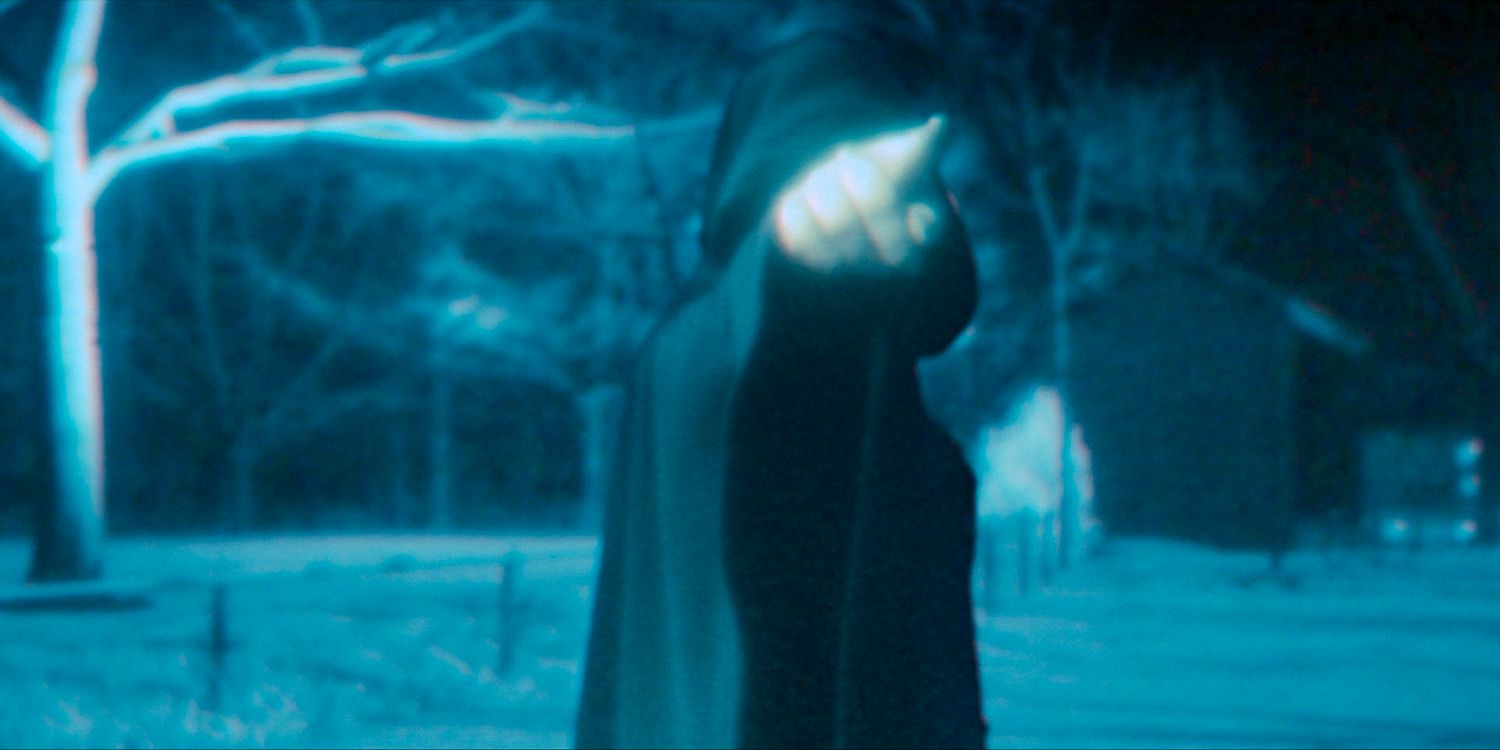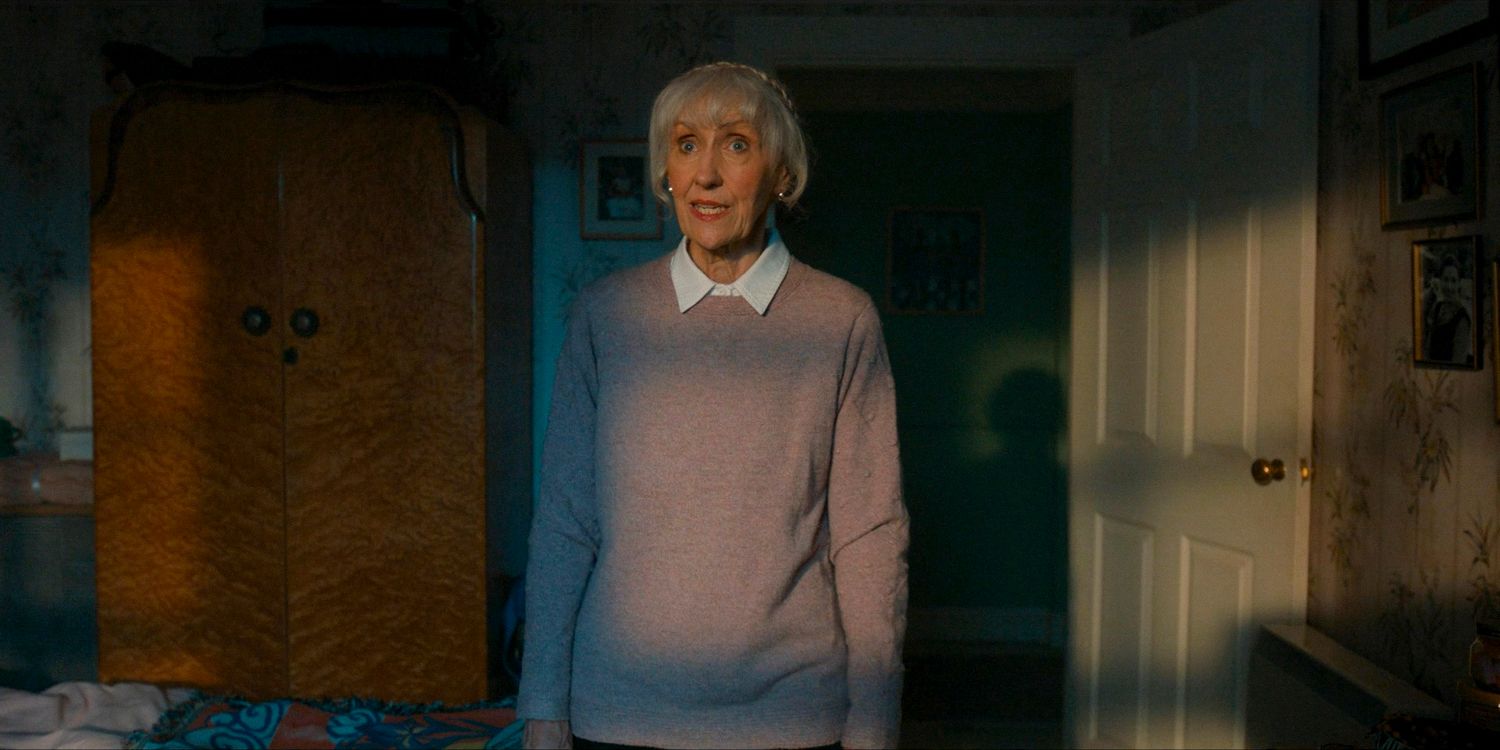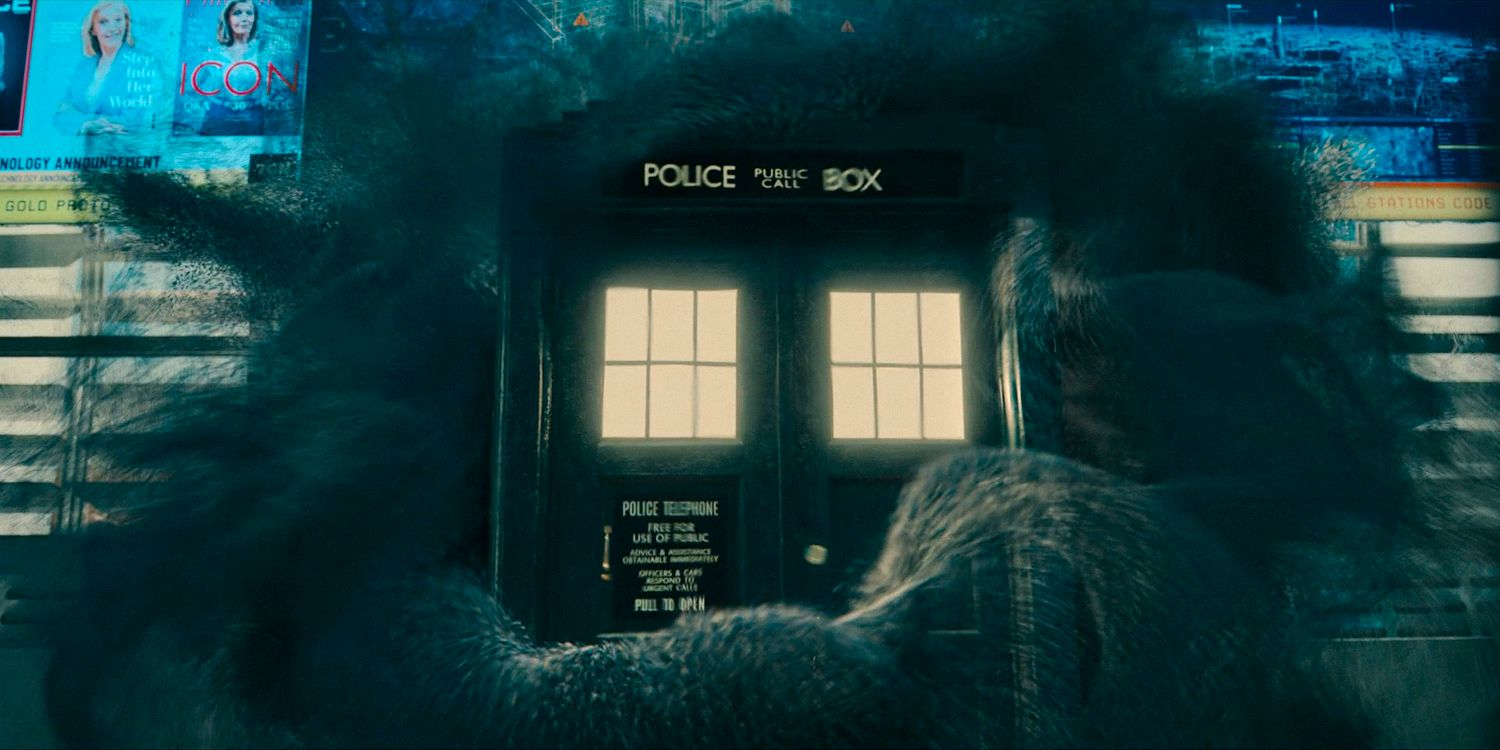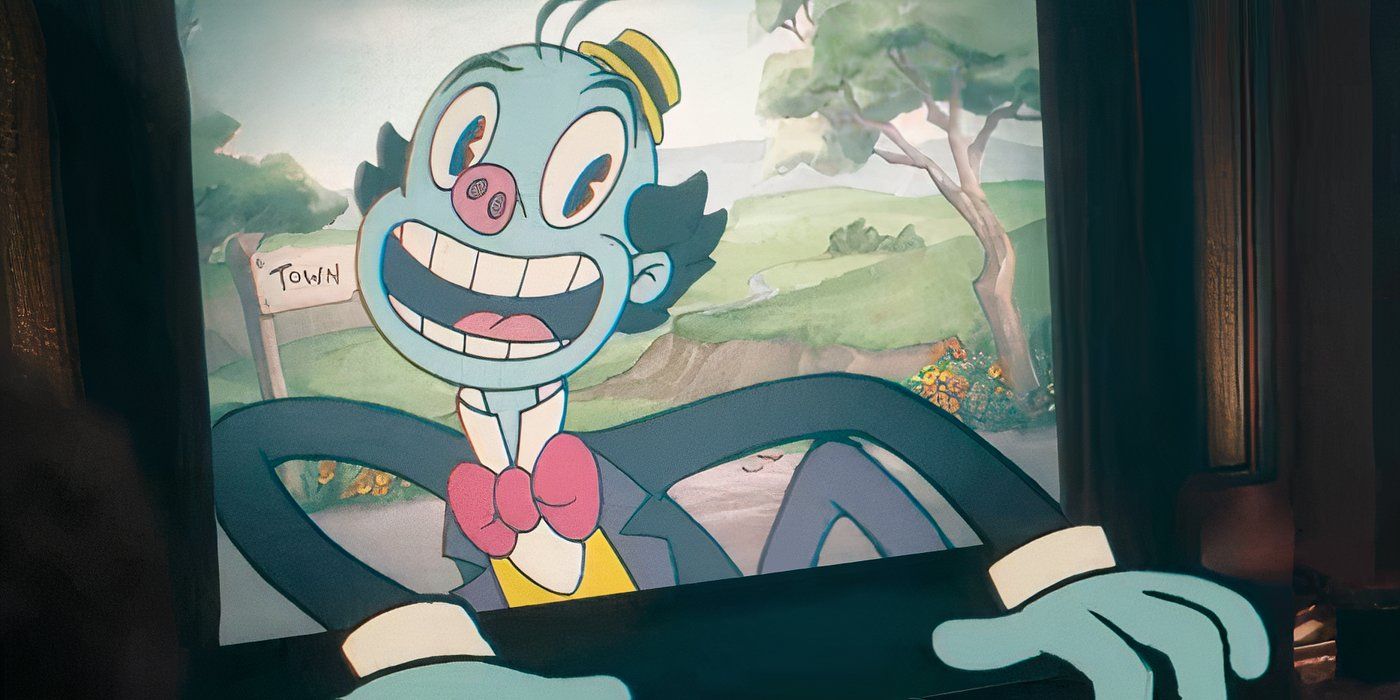Warning: Spoilers ahead for Doctor Who season 15, episode 2, “Lux.”The penultimate episode of Doctor Who season 14 not only revealed that Sutekh was back, but also the names of several other Gods associated with the Pantheon. The Pantheon has been explained on Doctor Who as a race of omnipotent, godlike creatures who leave a trail of destruction in their path. They are incredibly difficult to defeat, especially those at the top of the chain, and enjoy wreaking havoc for their own sake. The revelation that there are many monsters associated with the Pantheon suggests that many of the best Doctor Who stories may have involved these villains, even if it didn’t seem like it when they aired.
The Fifteenth Doctor (Ncuti Gatwa) and his companion, Ruby Sunday (Millie Gibson), have tangled with the Pantheon several times, though the current Pantheon storyline arguably began with a Fourteenth Doctor (David Tennant) adventure that should have led to that incarnation’s death. The Fourteenth Doctor “bi-generated,” making him able to exist concurrently with the Fifteenth Doctor, and there have been other strange happenings that have suggested the Pantheon’s influence is changing time and space in undesirable ways.
11
Sutekh
The God of Death is Also Known As “The One Who Waits”
Sutekh is an old enemy of the Doctor’s who first appeared in 1974’s “Pyramid of Mars.” Then, as now, he called himself the God of death, and his deepest desire was to destroy the entire universe. In the original story, The Doctor and Sarah Jane discovered Sutekh’s influence when they landed at an archaeological site that would eventually become UNIT headquarters and found a trail of death and destruction. The Doctor realized Sutekh was attempting to free himself from ancient bonds, which could not be allowed to happen or the universe would become a desolate wasteland.
“Pyramid of Mars” establishes that Sutekh is from the planet of Osiris and has been imprisoned in a pyramid by the Eye of Horus. Egyptian mythology includes Sutekh, the God of destruction, violence, deserts, and foreigners, murdering his brother Osiris, whose son was named Horus and was Sutekh’s worst enemy. The original story thus was a retelling of the Sutekh myth using sci-fi elements, though the plot of “Pyramid of Mars” is similar to the myth of Apep, the Egyptian God of darkness and chaos, who was imprisoned in the underworld because he was so dangerous.
Despite his cruelty, Sutekh believes himself to be a force of good that is alleviating suffering by bringing death to living creatures.
Sutekh’s return during “The Legend of Ruby Sunday” showed the depth of his cruelty, as he tricked the Doctor into thinking that perhaps his granddaughter Susan was still alive, only to reveal that it was the evil God himself who had been inhabiting Susan Triad’s body. Despite his cruelty, Sutekh believes himself to be a force of good that is alleviating suffering by bringing death to living creatures. He likely also has a grudge against the Doctor, as the Fourth Doctor re-imprisoned him in a time tunnel to stop him from destroying the universe.

Related
Does Doctor Who’s Sutekh reveal work if you’re not familiar with the Tom Baker-era villain?
This seems to be something the fandom can’t agree on – some think it’s impenetrable, others claim casual friends totally got it.
I’m a big fan of New Who, haven’t watched much of the Classic series, and found it all a bit alienating – the anagram part of the twist especially felt like it was meant to be something you should know. But how many people watching Doctor Who in 2024 have seen Pyramids of Mars?
Compare to The Master in season 3, which had lots of explicit textual set up (fob watches, You Are Not Alone). I’m not saying the villain didn’t have to be Sutekh – but perhaps the twist should have been more about his methods/mechanics/Pantheon plans and less about his name and history.
10
The Celestial Toymaker
The God of Games tanged with the First Doctor in a lost episode
The Celestial Toymaker (Neil Patrick Harris) was also an old enemy of the Doctor, having faced off with him during a William Hartnell episode that has since been lost. Originally, the Toymaker was an enigmatic figure who had the power to force people to play games with him, with disastrous consequences for the loser, and there was speculation about whether he was another Time Lord.
That changed during “The Giggle,” when Doctor Who explained the Toymaster’s origins and the Toymaster was revealed to be a member of the Pantheon. Although the Doctor defeated him, it came at a price, and the Fourteenth Doctor was mortally wounded. However, the Doctor bi-generated instead of regenerating, which likely was a result of the Toymaker’s influence on the universe. The Toymaker also revealed prior to his death that he was scared of The One Who Waits, setting up the season’s mystery about who that might be.
There is still a mystery surrounding the Toymaker, as he had turned the Master into a gold tooth and a hand was seen picking up that tooth after the Toymaker was defeated.
9
Maestro
The God of Music wanted to steal it all for themselves
Maestro was the first Pantheon member the Doctor and Ruby encountered on their adventures. They traveled to 1963 England, as Ruby wanted to see the Beatles making their debut album, only to find a world in which music did not exist and the members of the Beatles felt that they were wasting their time. These strange goings-on were the direct result of the Maestro stealing the music out of everyone’s soul.
The Maestro feasted on music and was starving because there was none left and thus tried to capture Ruby, who still had music in her soul. However, they soon picked up on the fact that The One Who Waits (later revealed to be Sutekh) was present at Ruby’s birth and backed off Ruby, too frightened to continue to torment her. This was an early clue that suggested that Ruby’s birth was somehow connected to the Pantheon.
There were several other clues as to Sutekh’s mischief during “The Devil’s Chord.” Most tellingly, the Doctor takes Ruby back to 2024, only for it to be a desolate wasteland because of the Maestro’s influence. This emotional scene mirrored a similar one between the Doctor and Sarah Jane during “Pyramid of Mars,” thus foreshadowing Sutekh’s arrival. In addition, one of Sutekh’s victims in the first part of “Pyramid of Mars” is playing the piano shortly before his death, and the scene is similar to the cold open that summoned the Maestro during “Devil’s Chord.”
8
The Mara
The God of Beasts possessed a Fifth Doctor companion twice
The Mara is the only one of the Pantheon to have appeared in the classic series as of now. This evil creature was said to reside in the dark part of the mind, and during “Kinda,” it was able to infiltrate Tegan (Janet Fielding)’s when the character fell asleep under some wind chimes while waiting for the Doctor. Tegan had strange dreams featuring a creepy man who demanded that she consent to being him and was briefly possessed by the Mara, who wanted to influence a member of the Kinda tribe to start a war.
The Mara was depicted as an evil spirit that reveled in creating death and destruction, and the Kinda believed that the Mara caused war and could be defeated by being peaceful. Some ancient cultures refer to a similar being in their mythology, especially Icelandic culture, which saw the Mara as an evil spirit that cursed humans without making themselves known and blamed it for nightmares and sleep paralysis. These aspects were similar to the version of the Mara on Doctor Who, as it possessed people through dreams and they often didn’t realize they had been possessed.
Since the Mara possessed her twice, it’s unclear if Tegan is a necessary vessel for it to re-enter the human realm or whether it could find a new host and wreak more havoc
Something that happens to every Doctor Who companion is that they face life-threatening danger. However, Tegan is the only companion that has been possessed by the Mara. Since the Mara possessed her twice, it’s unclear if Tegan is a necessary vessel for it to re-enter the human realm or whether it could find a new host and wreak more havoc. The Mara has yet to appear in modern Doctor Who, but could do so, since Sutekh made a point of naming this monster as a member of the Pantheon.
7
The Trickster
The God of Traps messed with one of the Doctor’s old companions (& Ten himself)
The Trickster likes to cause chaos and mess with the timeline. He had a particular fondness for messing with Sarah Jane Smith (Elisabeth Sladen), the Doctor’s former companion, and attempted to remove her from the timeline to cause trouble. The Trickster’s war with Sarah Jane lasted for several episodes of the spinoff series The Sarah Jane Adventures. This storyline revealed the Trickster to be a member of the “Pantheon of Discord,” long before the Doctor canonically tangled with the Pantheon.
While Sutekh and some other Pantheon members have appeared in Doctor Who before, the Trickster debuted elsewhere as part of the larger franchise.
The Trickster proves that Doctor Who doesn’t just dig into its own past to find potential villains that would be suitable for Pantheon membership after a little bit of retconning. While Sutekh and some other Pantheon members have appeared in Doctor Who before, the Trickster debuted elsewhere as part of the larger franchise. It helps that Russell T. Davies was also heavily involved in the child-friendly spinoff, but it’s also a brilliant decision in its own right to bring back the powerful bad guy in Doctor Who‘s Disney era – even if only by Sutekh saying his name.
6
Reprobate
The God of Spite has not yet been seen
Davies hasn’t fully relied upon known Doctor Who villains when building the Pantheon. Instead, he has chosen to keep certain Gods shrouded in ambiguity by having Sutekh name them only by name. Reprobate, the God of Spite, is just one example of Pantheon members within this category. Reprobate, as far as anyone can prove, has never appeared in Doctor Who. Having said that, it could be that they are a familiar face going by a new name. This hasn’t happened with the other Pantheon Gods, but there is a first time for everything.

Related
Matt Smith’s Eleventh Doctor faced many villains new and old, but a figure from the former category could easily return thanks to the Pantheon.
It’s tough to imagine what kind of challenges the God of Spite could present. For other Pantheon Gods, like the Toymaker and Maestro, it’s relatively easy to predict the sort of fight that would unfold between them and the Doctor. Reprobate’s specialty being spite leaves things incredibly ambiguous. Of course, spite is objectively more villainous than things like games or music, so the Doctor will definitely have his work cut out for him if he ever crosses paths with Reprobate.
5
The Threefold Deity of Malice, Mischief, & Misery
It’s possible this God could be one being or three
Although Sutekh mentioned this God as a “threefold deity,” which suggests it is one God with three heads. However, it could also be three separate beings that usually travel together or appear identical to one another. This is another God or set of Gods that has not appeared on-screen. However, the Seventh Doctor (Sylvester McCoy) once mentioned having fought the Gods of Ragnarok throughout his lifetime, and this was a set of three that was forcing people to entertain them, so it’s possible that these three could be retconned into the Pantheon.
If ever the Doctor were to come across this Pantheon trio, it would likely be a very different fight from the ones he has faced so far.
If ever the Doctor were to come across this Pantheon trio, it would likely be a very different fight from the ones he has faced so far. Some battles with Pantheon Gods, like Maestro, were over within a single episode. On the other hand, others – like the Trickster – took a little longer to defeat. Fighting three Gods at once would surely land this trio in the latter category, as it would make them far less fearsome if the Doctor still managed to dispense with them as quickly as some of their fellow Pantheon members.
4
Gods of Skin and Shame & Secrets
There are a few clues regarding who these Gods could be
After naming a lot of the more major or familiar Gods, Sutekh’s big monologue starts to group together certain names. As such, the Gods of Skin, Shame, and Secrets are all mentioned within the same breath. They may always be seen together as was implied for the God(s) of Malice, Mischief, and Misery – or Sutekh could have been in summary mode at that point. For the Doctor’s sake, I hope it is just one God rather than three more, as he already has his work cut out for him for the immediate future.
3
Incensor
It’s possible a familiar face is the God of Disaster
Incensor has not yet been revealed on-screen, but it’s possible she is Mrs. Flood’s true identity. This contradicts a Doctor Who theory that Mrs. Flood is a Time Lord. However, it is equally plausible that she is a member of the Pantheon, given the way she presents as a kindly neighbor yet made an ominous comment about Sutekh’s return while alone with Cherry. Thus, her name could be a clever play on words, as a flood is a type of disaster, while the similarity of her name to Amy Pond and River Song’s names is a red herring.
2
Dread & Doubt
Incensor’s children are the last two Gods mentioned by Sutekh
Doctor Who has not only kept Dread and Doubt off-screen so far, but has not even made it clear whether these twins are identical. This makes these two among the most mysterious members of the Pantheon. With so little information to go on, it’s difficult to determine anything about them. Doctor Who has had no shortage of twins in its 60-year history, but perhaps these two being from a different generation is foreshadowing that they will be entirely new villains rather than retcons of characters who have been seen before.
1
Lux Imperator
The God of Light manifests as a cartoon character called Mr. Ring-a-Ding
Lux makes his debut in Doctor Who season 15, episode 2, “Lux.” Ncuti Gatwa’s Fifteenth Doctor, with the help of Belinda Chandra (Varada Sethu), manages to defeat the God of Light within a single episode. However, it’s not an easy fight. Lux has the power to manipulate light, which makes his abilities quite broad. For instance, he pulls Mr. Pye’s late wife from a reel of footage and brings her into the physical realm. Inversely, Lux also sends the Doctor and Belinda into an animated world from which they must escape.
Lux ultimately gets what he wants, although it’s before he’s able to finish draining the Doctor of his regeneration energy.
Perhaps most worryingly, Lux can draw out the Doctor’s regeneration energy, and is shown to do so. He absorbs the orange stream of light in an attempt to build himself a body capable of venturing out of the movie theater’s darkness and searching for greater sources of power. Lux ultimately gets what he wants, although it’s before he’s able to finish draining the Doctor of his regeneration energy. As a result, the God of Light’s exposure to the sun and the rest of the universe causes him to grow without end, and he becomes one with the Doctor Who universe.

- Release Date
-
December 25, 2023
- Directors
-
Douglas Camfield, David Maloney, Christopher Barry, Michael E. Briant, Barry Letts, Michael Ferguson, Richard Martin, Peter Moffatt, Pennant Roberts, Lennie Mayne, Chris Clough, Ron Jones, Paddy Russell, Paul Bernard, Michael Hayes, Timothy Combe, Morris Barry, Gerald Blake, Graeme Harper, Waris Hussein, Rodney Bennett, Mervyn Pinfield, Hugh David, John Gorrie
This story originally appeared on Screenrant


